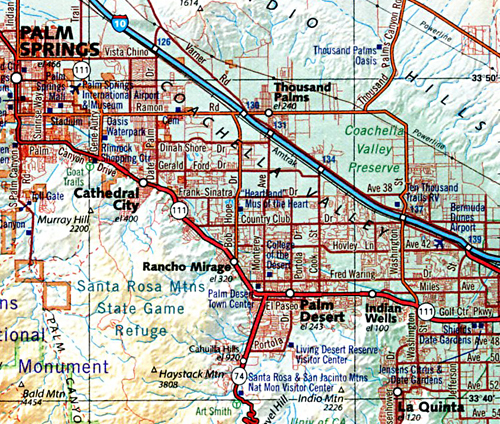
|
| ||||||||
| GEOL 5 - HISTORICAL GEOLOGY | Last Updated • May 28, 2009 | |||||||
This class is a 4-units, general education class that includes both lecture and lab; an introduction to the basic principles of geology and plate tectonics is followed by a more detailed study of sedimentary rocks and the principles of stratigraphy, sedimentology, and paleontology. Knowledge of these principles will help the students understand how Earth history can be deciphered from the rock and fossil record. The main physical, chemical and biological changes that occurred in the 4.6 billion years of existence of our planet will be outlined.
If you already have a basic knowledge of geology (for instance, you already took Geology 1 or Geology 4) you might find yourself at a slight advantage. Nonetheless, you will see throughout the class that all materials will be explained thoroughly and the class is fully accessible to anyone with a genuine curiosity and desire to learn. You also need to be aware that this class will require continuous and constant attention and that, in order to succeed, you will need to dedicate a considerable amount of time to study and work on its materials.
For what concerns the lab manual, DO NOT buy a used copy for any reason; questions and exercises on the lab manual require that pages are teared off and turned in to the instructor for grading after a lab. Many students who bought used copies in the past, either from the bookstore or from other students, found out after a week or two that they had incomplete manuals in their hands, with several missing pages.
I will only accept lab work from the current edition of the lab manual (9th edition). I will not accept lab work neither from older editions (even if brand new: questions are different, and/or not in the same order or page), nor from used copies of the new edition.
Exam dates are as follows: Please, refer to the class syllabus for further information and/or details
| GEOL 35 - FIELD STUDIES: CALIFORNIA | Last Updated • Appril 3, 2009 | This class is a general education, hands-on class that will allow you to see and experience in person some prominent geologic features of southern California. There are no prerequisites, there are no exams, there is no homework. All you have to do is come to a series of introductory class meetings, then come in the field and write a short report on the geologic features you studied and saw in person. If you want to have an idea of what we do in the field, check out the images from the Spring 2007 trip to Mono Lake and the Owens Valley and from the Spring 2008 trips to Wheeler Gorge and the Carrizo Plain and to the Mojave Desert and the Mitchell Caverns.
Class Meetings:
Field Trip: We will most likely do free camping in the desert. We will stay at a primitive location, with no facilities or services of any sort available; bring everything you need for two nights and three days in the desert. We will have the possibility to go back to civilization in case of emergency.
Tents, sleeping bags, and more can be rented at Adventure 16 (one location is in West Los Angeles, not far from the College). Prices are available online.
Remember that absolutely no alcohol is permitted during the field trip and that, as for Santa Monica College and Bureau of Land Management policies, smoking is also not permitted (unless you are in your car).
We will leave the Santa Monica College parking lot at 8.00 AM sharp on Friday, April 24, 2009
Field Trip Map  Alessandro Grippo, TOPO software © National Geographic Society
Meeting Point Details  Benchmark Maps, Medford, Oregon © California Road and Recreation Atlas, 2005 (4th edition)
Costs: ALL other costs (transportation, food, field trip fees at state and/or national parks, etc.) will have to be paid for by the students. In particular, transportation will be by private vehicles, so you may want to consider car pooling. Some roads are not paved but no four-wheel drive vehicles are necessary.
Again, absolutely no alcohol is permitted during the field trip. | |||||